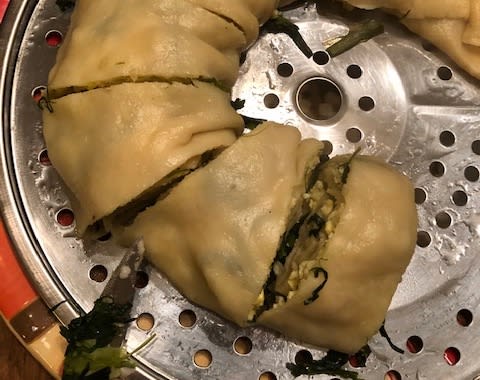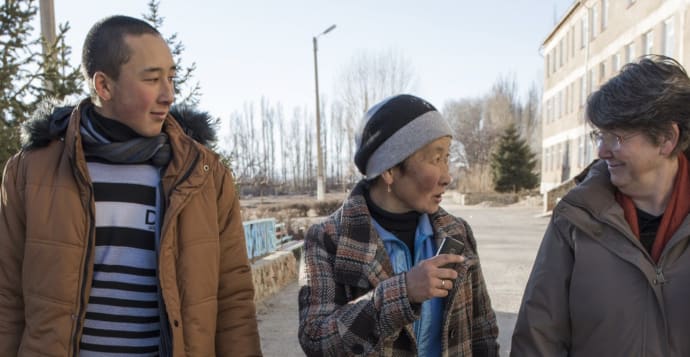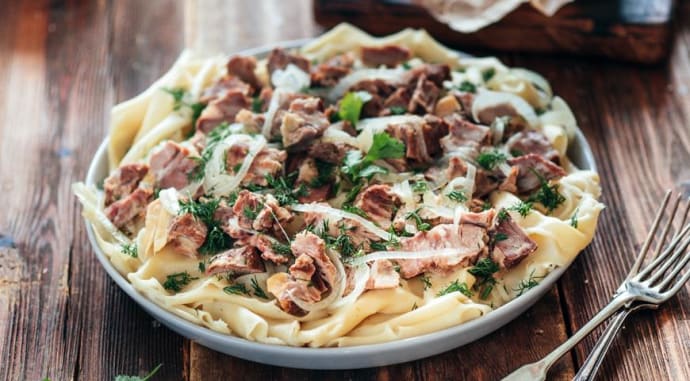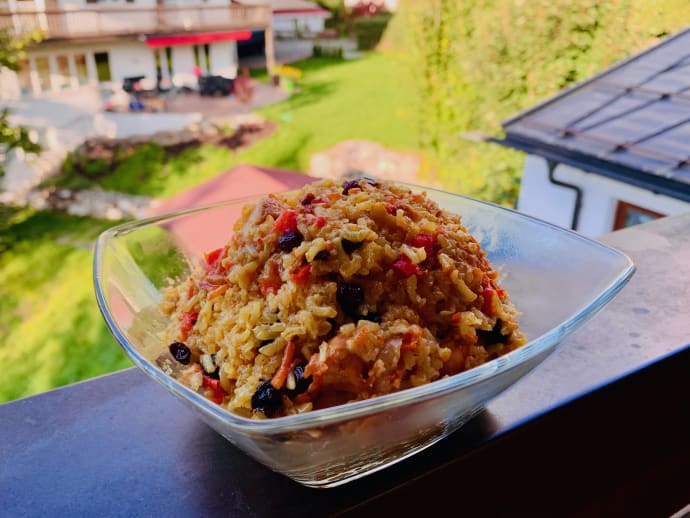
How to cook plov from southern Kyrgyzstan
For this month’s Kyrgyz Cookoff challenge, K-19 Judson L Moore introduces us to his variation of the Southern Plov recipe from the Friends of Kyrgyzstan Cookbook.
Why I love plov
When I was a volunteer in Talas, I lived with a family who loved to cook plov, and I picked up the habit from them. To be fair, of all the Kyrgyz food, plov is my favorite (though, of course, it is hard to choose a single favorite from all the great options).
With my host family, I learned to cook plov in the traditional way, but when I moved out to live on my own, I discovered an alternative recipe in the Peace Corps Kyrgyzstan Cookbook, which became my go-to when I cook plov myself.
Scandalously, this “Southern Plov” recipe calls for such additions as raisins and pineapple, which is likely why I like it so much because I also love Hawaiian Pizza. I also preferred that the recipe used chicken meat instead of mutton, though while I still lived in Talas, I almost always used duck breast because this was always available at my local kiosk.
Now that I am an RPCV, I often cook plov for house guests and family. Below is my adaptation for how to cook plov from southern Kyrgyzstan. I hope that you will try it and love it as much as I do!
Ingredients for plov
All of the ingredients for plov are common all around the world or are easily substitutable. You can replace the chicken meat with duck, mutton, beef, or wholly omitted to make a vegetarian plov. Uzgen rice is by far the best rice for plov, but outside of the Central Asian region, this will be very hard to come by, so I usually use regular long-grain rice instead.
- 5 tsp salt
- 5 bay leafs
- 1 packet plov spices
- 6 cloves garlic, peeled
- 2 boneless, skinless, chicken breasts
- 5 cups Uzbek rice (or long-grain rice)
- 1⁄4 cup sunflower oil
- 1⁄4 cup maple syrup or honey
- 1⁄2 cup diced carrots
- 1⁄2 cup diced onions
- 1⁄2 cup diced peppers
- 1⁄2 cup of raisins
- 1 pineapple, chopped (optional)
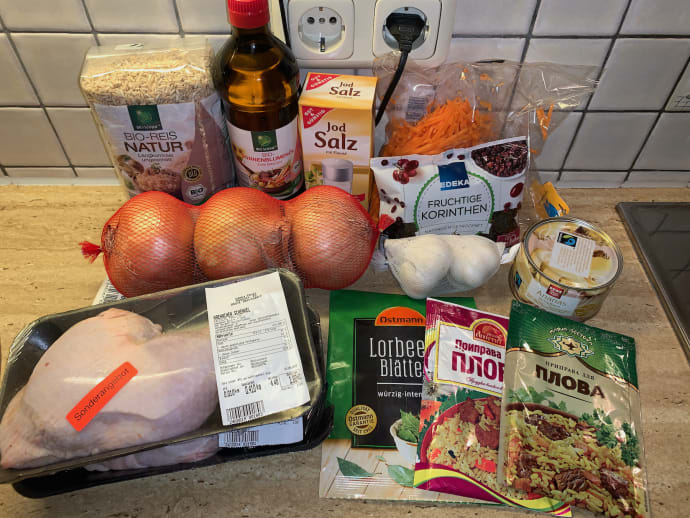
Note: I am cooking this from Germany, so the ingredients pictured above have German names. Sorry for the confusion!
Preparation
I like to cook plov for guests and events because it is a very affordable way to feed a lot of people without creating a lot of dirty dishes along the way. Aside from a fair amount of slicing and dicing ingredients at the beginning, the whole dish is just adding things to a pot in the right order and at the right time.
Before you get started cooking plov, I recommend that you prepare by cutting:
- chicken (or other meat)
- carrots
- onions
- peppers
Protip: look for pre-cut carrots at your local grocery; this will save you a considerable amount of time and effort! You can also buy the pineapples in a can already sliced.
1. Soak rice in saltwater for 2 hours
When you were in Kyrgyzstan, did you have to clean and sort rice purchased from the bazaar one grain at a time to identify pebbles? I sure did! Luckily, you probably do not need to do that with pre-packaged rice purchased at a grocery store. Nonetheless, it is advisable to clean rice from any source in salt a saltwater bath. This also helps soften the rice before cooking it, so that it will cook faster and not overcook the other ingredients already in the pot.
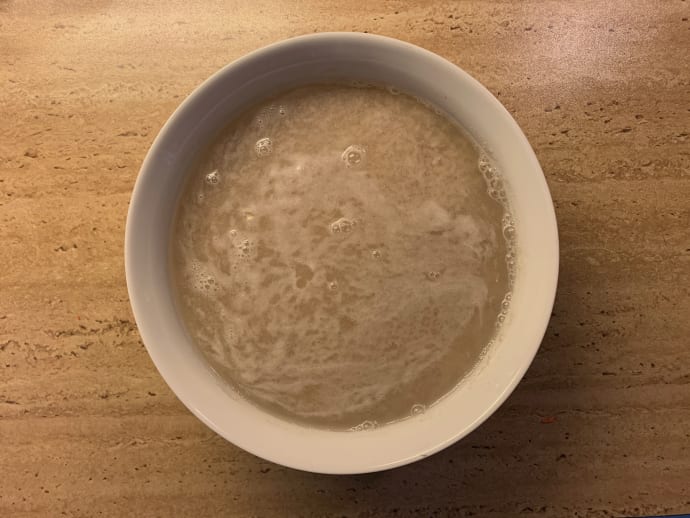
2. Coat the bottom of a large pot with 0.5 centimeters of sunflower oil
I’m not much of one for cooking with oil, so I try to keep this to a minimum. I’ve tried a few other types of oil but always come back to sunflower oil. For plov, it just seems to extract the best flavor profiles from the ingredients.
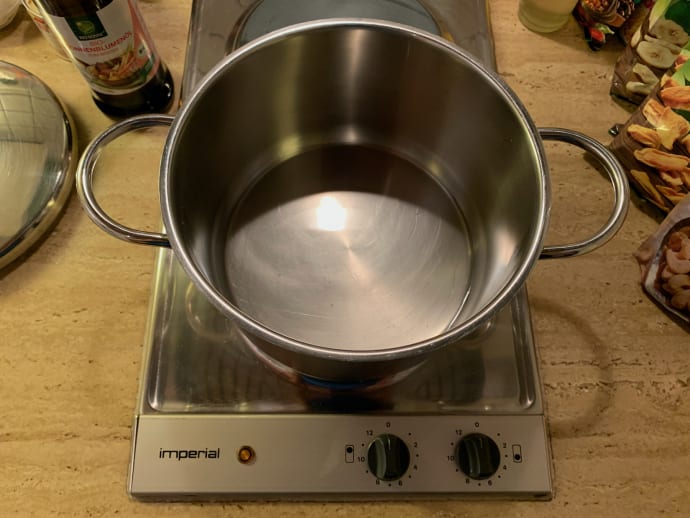
3. Heat on high, add chicken, carrots, onions, and peppers
Once the oil is heated up, add the chicken, followed by the carrots, onions, and peppers. You can put these all in at once. By adding the chicken first, the chicken soaks up the oil first, giving it a fried texture.
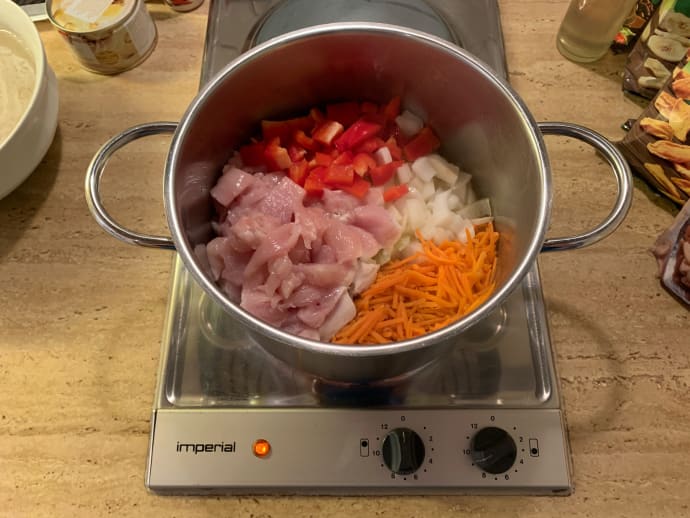
4. Cook for 15 minutes until browned and cooked almost all the way through (chicken is no longer bloody)
Occasionally stir the ingredients to prevent anything from sticking to the bottom of the pot and burning. Very important: leave the lid off so that moisture can escape; otherwise, you’ll be making a plov soup!
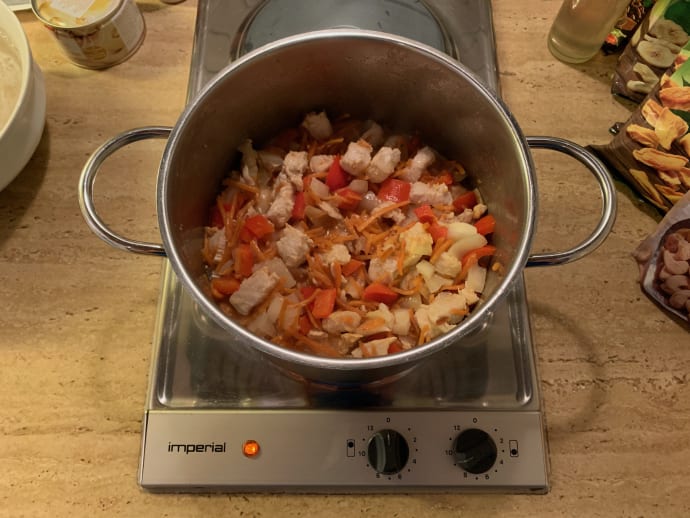
5. Add plov spices packet
If you can get your hands on a plov spice packet like the ones shown in the photo above, add them here. If you cannot find such a package near you, you can make plov spice mix by mixing:
- 1 Tbsp coriander, ground
- 1 Tbsp paprika
- 1 tsp black pepper, ground
- 4 cloves
- 3 Tbsp wild black cumin
- Salt (to taste)
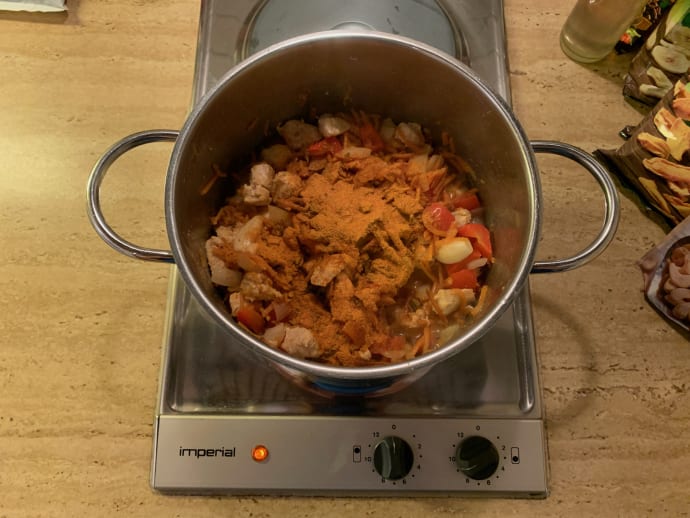
6. Stir everything thoroughly
As the chicken is looking cooked and the carrots are softening, ensure everything is thoroughly mixed so that all the spices are evenly distributed, and there are no clumps of anything sticking together.
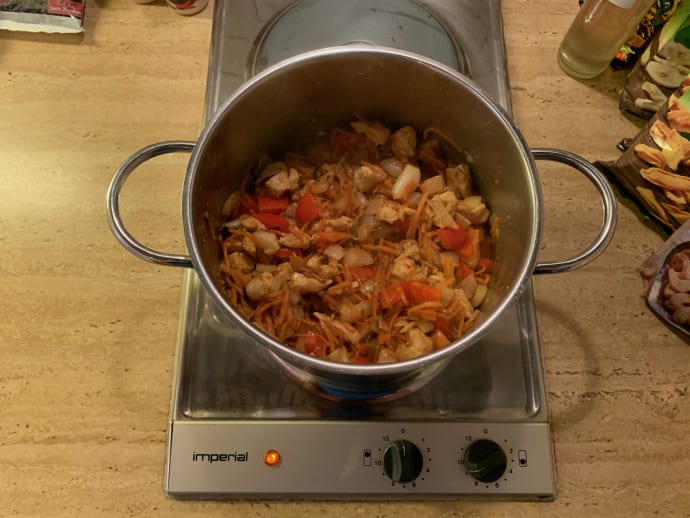
7. Drain and rinse uncooked rice
Now you can drain and rinse the rice from its salt bath. A spaghetti strainer is usually suitable for this job; just make sure that the holes are small enough to catch the rice. Consider catching the water in another pot just in case some rice does get through the strainer. Run tap water over the drained rice to clean it of any other residues.
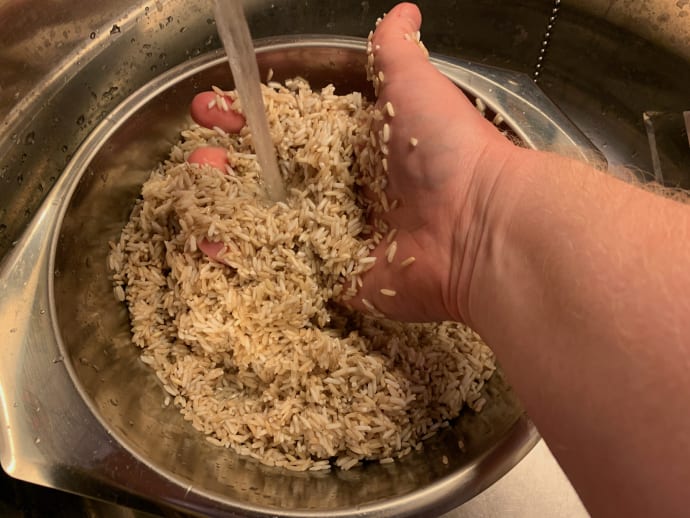
8. Add rice, so it’s covering all ingredients
For the next few steps, you need a little bit of speed. Remember: the heat is high, and the ingredients on the bottom of the pot.
So now, evenly distribute the cleaned rice across the top of the other ingredients. Make this as flat and even as possible.
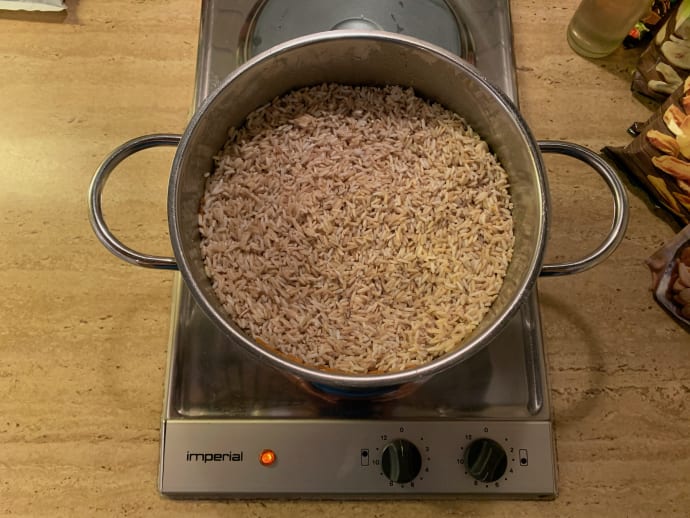
9. Add raisins
Add all of the raisins on top of the rice as evenly as possible. Don’t worry about any clumping of the raisins.
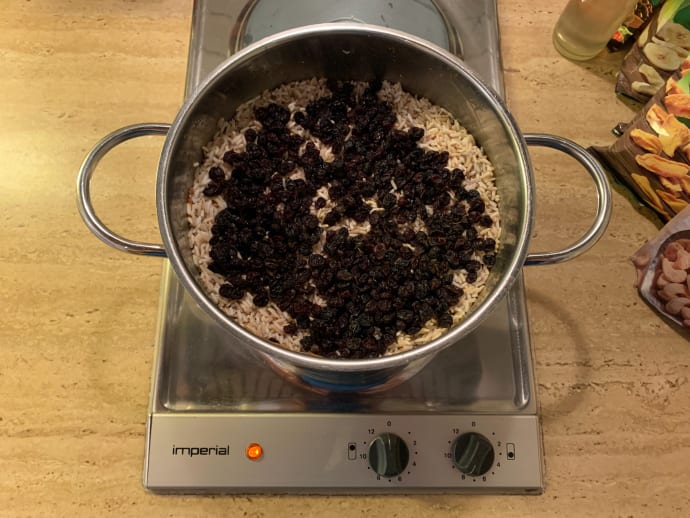
10. Add pineapple (if using) and maple syrup or honey
Add pineapple evenly on top of the raisins and drizzle with maple syrup or honey.
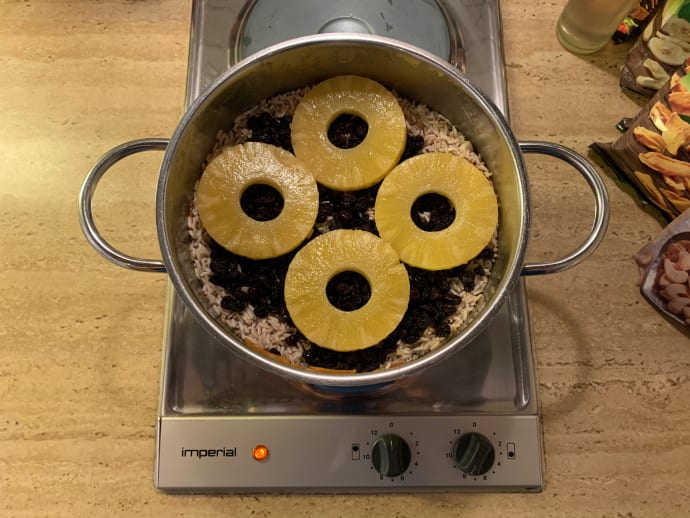
11. Add bay leaves
Add a few bay leaves around the gaps between the pineapples.
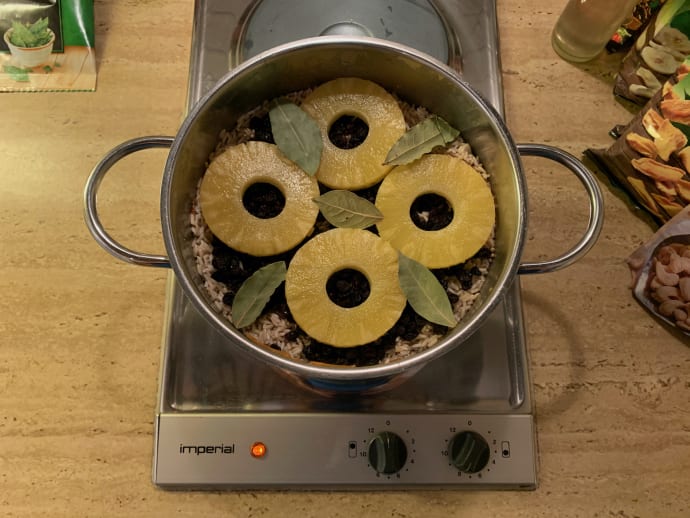
12. Add water so that rice is just barely covered
Now pour in water (better if it is hot, even pre-boiled from a kettle) so that everything in the pot is just below the water’s surface.
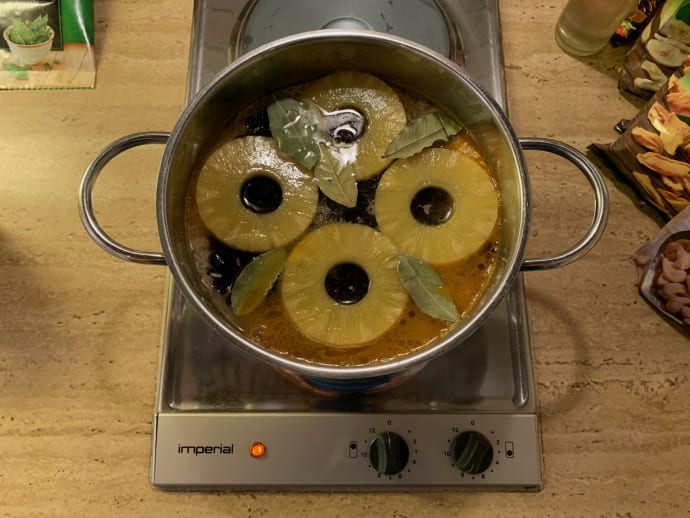
13. Cover pot and let the water boil down again (roughly 10 minutes)
Cover the pot on high heat and let the water boil down. Note that you should check this every 5-7 minutes, and you might want to add more water back in 1-2 times, again covering all ingredients in water. Be careful not to overdo it (again: you’re not making soup!), but by adding water once or twice, you will ensure that the rice cooks properly. Just test the rice as you go and if the water level is getting low and the rice is still hard, add more water.
If you add too much water, tilt the pot to drain it out or leave the lid off for a while so that the water can boil out.
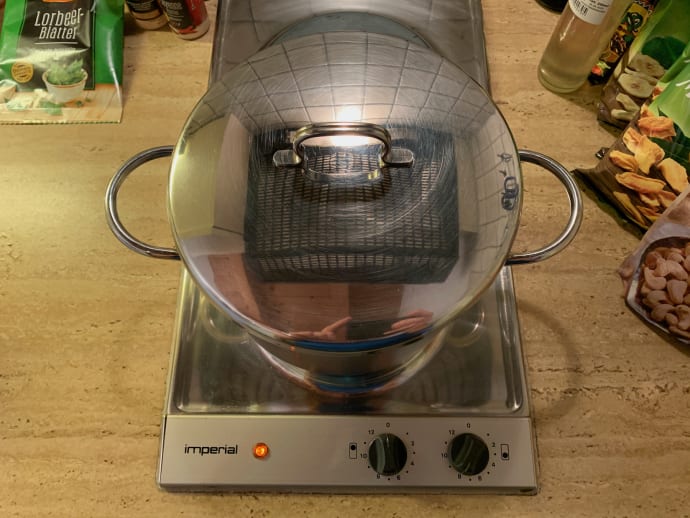
14. At this point, the rice should be getting soft
After 20-30 minutes of cooking on high-heat, and maybe 1-2 additional rounds of topping off the water-level, the rice should be getting soft and tasting like something you want to eat. Also: the smell will be fantastic!
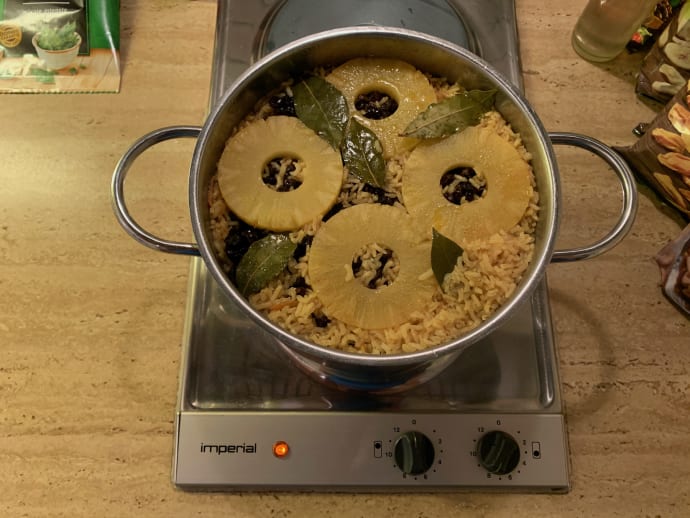
15. Use a large spoon to mix the plov and cover and simmer for another 10 minutes
Once the rice is appropriately soft, use a large spoon to mix the contents of the pot. Go slowly, and do your best to raise the ingredients from the bottom of the pot to the top to get everything as mixed as possible.
Cover on low heat for 10 minutes.
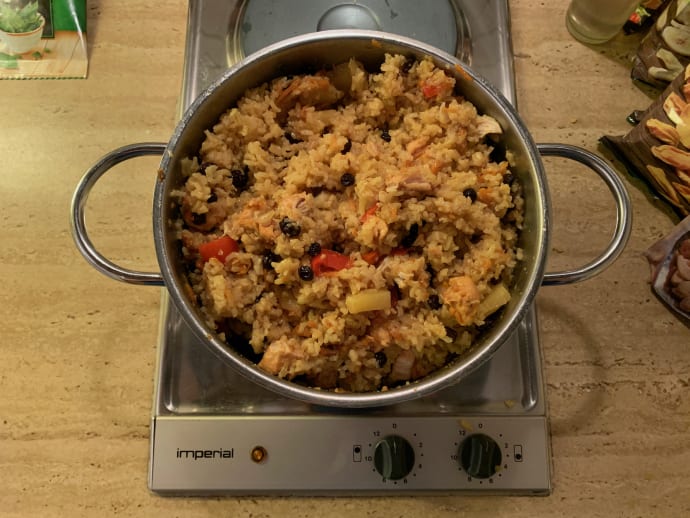
16. Serve hot
You did it! You’ve made plov! Now serve some up on some nice plates and enjoy with friends and family!
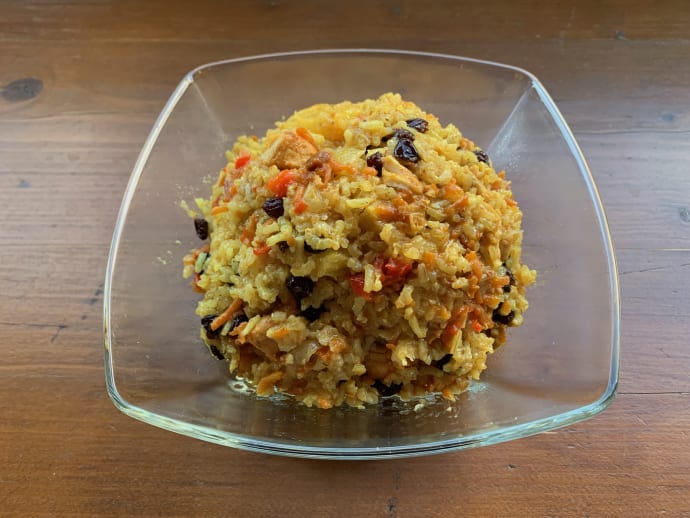
Conclusion
I know it might be a scandal to cook plov with pineapple, raisins, and meat that is not mutton. At least for us volunteers from the north of Kyrgyzstan, these ingredients were unheard of in plov. Nonetheless, this variation is a delicious dish that is sure to please all who taste it! Just be sure to serve it with lots of stories of your service and fond memories of Kyrgyzstan!
When you cook this, be sure to post a photo and your feedback in the comments below!
